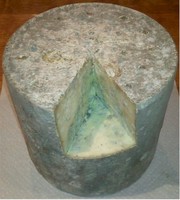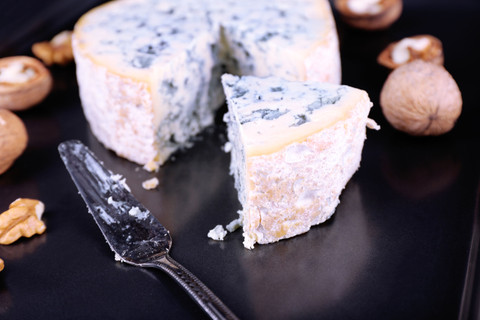The Evolution of a Stilton Style Blue Cheese
Posted by The CheeseMaker on 2nd Feb 2016
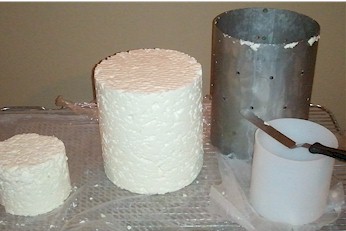
Using 18 gallons of fresh raw cows milk, cheese making friends Anthony, Nicole & John as well as myself made three blue cheeses. We followed the Stilton style method, which doesn't allow for any heavy pressing of the curds. Only light pressing by hands to even out the curds in the hoop, gravity keeps the curds knitted together. The blue mold was directly inoculated into the milk along with the culture. The following photos will chronicle how differently all of our cheeses will age. Since each cheese is being aged in a separate house in a cheese cave with different climates, we will learn how the different climates affect the final taste and texture of each cheese. Additionally, piercing times may vary based on when each of us wants our blue to begin its interior veining, thereby changing the flavor of the cheese.
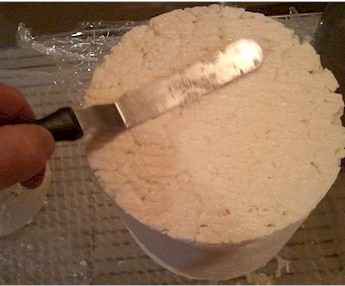
This Stilton style Blue cheese was made using Kaza Mesophilic lactic starter culture, Penicillium roqueforti PA strain and veal rennet.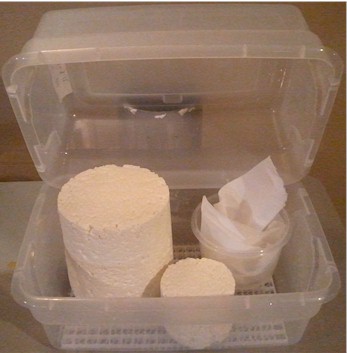 The cheese just out of the mould (hoop) after 24 hours of ripening. The extra curd from 6 gallons of milk made another much smaller blue. Using a cake frosting knife, carefully 'creaming' the sides of the cheese to help close up major holes in the cheese. This type of Blue cheese is not pressed. The curds are ladled into the mould, allowing gravity to gently press/hold them together. This allows more air to stay inside the cheese so the Blue mold can eventually grow from the inside out, forming those famour blue veins.
The cheese just out of the mould (hoop) after 24 hours of ripening. The extra curd from 6 gallons of milk made another much smaller blue. Using a cake frosting knife, carefully 'creaming' the sides of the cheese to help close up major holes in the cheese. This type of Blue cheese is not pressed. The curds are ladled into the mould, allowing gravity to gently press/hold them together. This allows more air to stay inside the cheese so the Blue mold can eventually grow from the inside out, forming those famour blue veins.
Using two plastic containers a cheese cave is made. Note the bowl of sanitized water/paper towel to help maintain humidity creating a miniature microclimate. 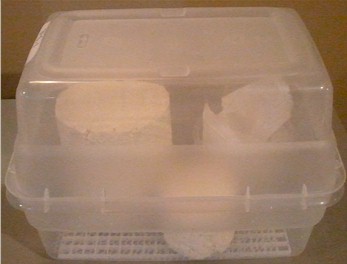
Blue mold starts forming on the exterior of this Stilton at about the 5th day at 54f.
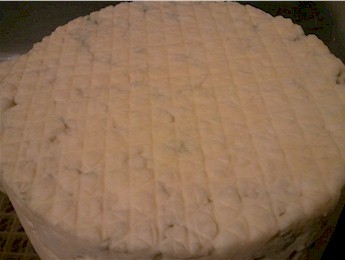
Another Stilton style blue made by friends Nicole and John exhibits even faster exterior blueing. 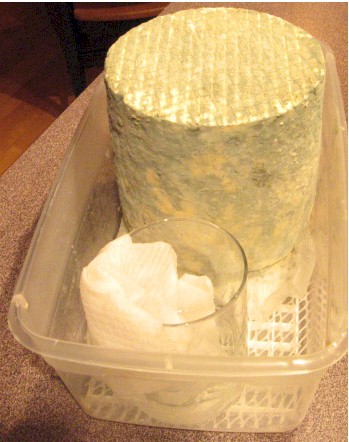
Anthony's Stilton style blue is also showing exterior blueing on about the 7th day of aging at 59f, 86% rh. 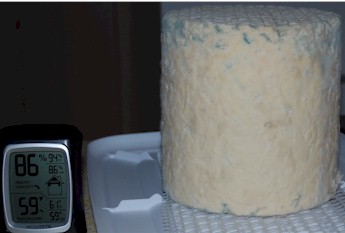
Another week and Anthony's Stilton style blue is now showing the wide diversity of flora. These molds will die off in time and the rind will harden a bit, helping to protect the delicious Stilton inside. at 54f, 91% rh
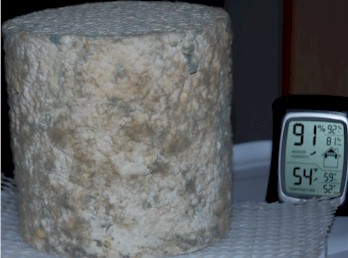 | 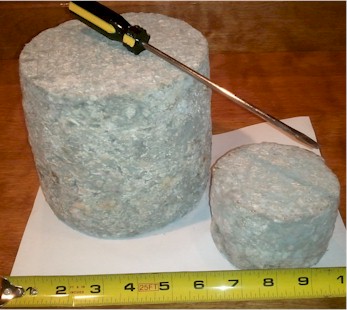 | 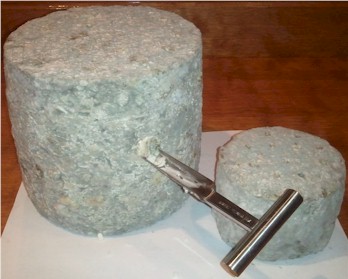 |
This Stilton is pierced at 30 days using a very modern piercing tool, a clean screwdriver.
After piercing, a core sample is taken showing the creamy white cheese, less any blue mold growth.
The core sample is pushed back in to minimize any large airspace in the cheese.
The Stiltons are placed back into their very modern individual cheese cave, a carboard box. Note the bowl of sanitized water with paper towel to wick moisture, increasing humidity.
Steve's nine pound Stilton style blue 2.3 months aging at 52-54f.
A bit young & mild at this point but quite edible.
